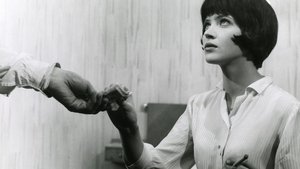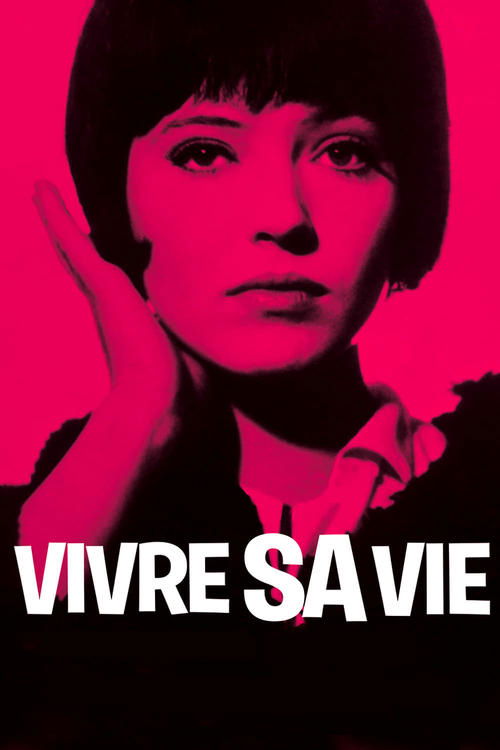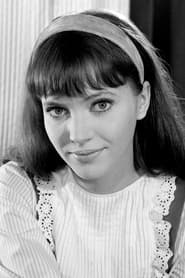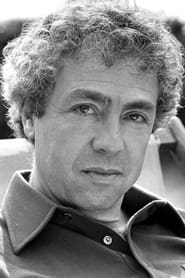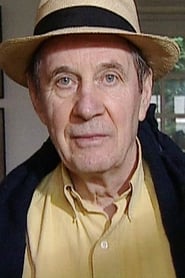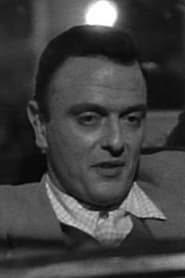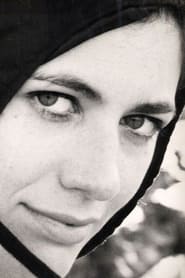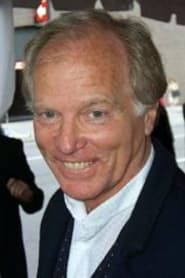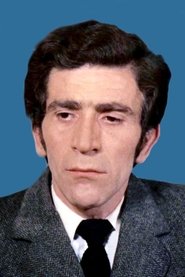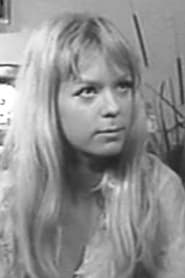Cast
View AllAnna Karina
as Nana Kleinfrankenheim
Sady Rebbot
as Raoul
André S. Labarthe
as Paul
Guylaine Schlumberger
as Yvette
Gérard Hoffmann
as Chef
Monique Messine
as Elisabeth
Paul Pavel
as Journalist
Dimitri Dineff
as Dimitri
Peter Kassovitz
as Young Man
Eric Schlumberger
as Luigi
Brice Parain
as Philosopher
Henri Attal
as Arthur
Gilles Quéant
as First Customer
Odile Geoffroy
as The Cafe Waitress
Marcel Charton
as Policeman
Crew
Director
- Jean-Luc Godard
Writer
- Jean-Luc Godard
Producer
- Pierre Braunberger
Reviews
CRCulver
<i>Vivre sa vie</i> was Jean-Luc Godard's fourth feature film. The protagonist Nana (Anna Karina) is a young Parisian woman who is not especially bright, but full of life and endowed with great beauty. Unable to make ends meet by working at a record shop, and unable to break into films as she dreams, she starts to work as a prostitute. Postwar French law permitted prostitution, with certain rules and regulations that the film explains in a documentary-like segment. Nana, who yearns to live her life according to her own desires, initially thinks that this new profession has set her free from cares. In fact, Nana's liberation from penury through prostitution only subjects her to new constraints imposed by her pimp and clientele. The film, divided into twelve tableaux with fade-to-black transitions that quicken as it goes on (which one commentator compares to breathing faster and faster) brings us to one of the most shocking endings I have ever seen.
This is a superlative film. Clocking in at 85 minutes, it lasts exactly as long as its story demands, with not a single moment that feels superfluous. Everything fits together, perfectly even things that ought to seem extraneous, the overindulgence of the auteur. Early in the film Nana goes to see Carl Dreyer's 1928 silent film <i>La Passion de Jeanne d'Arc</i>, and this is not a mere gratuitous tribute to earlier cinema as is common in French New Wave films. Nana speaks with an elderly philosopher in a café, who is in fact the real-life philosopher Brice Parain whose dialogue here consists of his own writings, and yet this is not shallow intellectualism. Rather, these scenes increase the three-dimensionality of Nana as a character: not very intelligent and with negligible education, an easy woman since long before the film begins, but feeling strongly that there must be more out there.
The believability of Nana as a character is increased all the more by Anna Karina's masterful performance. When coming to Godard's films, after the filmmaker has taken a beating from some circles, one might think that Karina was simply a beauty with no especial talent that enchanted the director due to her looks and foreign origin. Nope, the Danish actress here presents a completely believable Parisian airhead who is so easily moved by sentimental art.
Sep 2, 2018
badelf
It's Jean-Luc Godard at the avant-garde of filmmaking. It's a brilliant film with so many new ideas for early the 60s. What else is there to say?
Oct 11, 2022
Thematic Analysis
As a dramatic work, Vivre Sa Vie examines complex human relationships and emotional struggles against the backdrop of a period setting that reflects societal issues of its time. The character development particularly stands out, offering viewers a chance to reflect on their own life journeys.
Director Jean-Luc Godard brings their distinctive visual style to this film, continuing their exploration of themes seen in their previous works while adding new elements. Their approach to character development and emotional depth creates a viewing experience that rewards close attention.
Released in 1962, the film exists within a cultural context that now offers viewers historical perspective on the social issues of that era. Its critical acclaim reflects its artistic achievements and its place in cinema history.
Did You Know?
- The production of Vivre Sa Vie took approximately 24 months from pre-production to final cut.
- With a budget of $0.1 million, the film represented a significant investment in bringing this story to the screen.
- The final cut of the film runs for 84 minutes, though the director's initial assembly was reportedly 118 minutes long.
- The film contains approximately 898 individual shots.
- The musical score contains over 60 unique compositions.
- Some visual effects sequences took up to 11 months to complete.
Historical Context
- In 1962, when this film was released:
- Counterculture movements were challenging traditional values.
- The space race between the USSR and USA was at its height.
- The film industry was dominated by major studios, with independent cinema still in its early development.
How This Film Stands Out
While Vivre Sa Vie shares thematic elements with other films in its genre, it distinguishes itself through its unique approach to storytelling, visual style, and character development.
Unlike Love at Twenty, which takes a more conventional approach to its subject matter, Vivre Sa Vie subverts genre expectations by exploring its themes with greater nuance.
While films like Raging Bull and Rope explore similar territory, Vivre Sa Vie stands apart through its deeper exploration of its central themes and more complex characterization.
This film's unique contribution to cinema lies in its bold artistic choices and willingness to challenge viewer expectations, making it a valuable addition to its genre.
Details
- Release Date: September 20, 1962
- Runtime: 1h 24m
- Budget: $64,000
- Revenue: $24,517
Where to Watch



